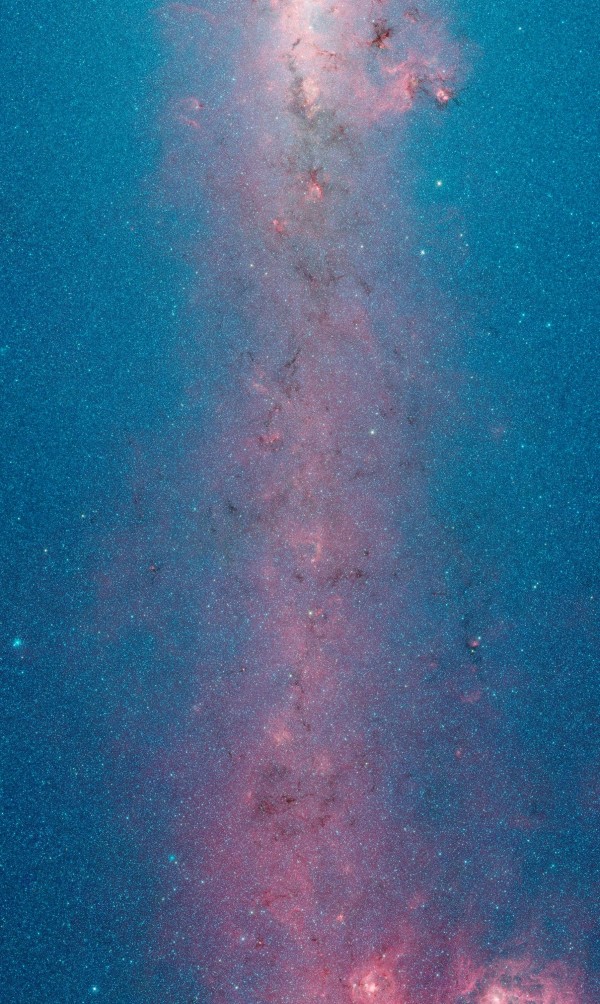“Beauty is unbearable, drives us to despair, offering us for a minute the glimpse of an eternity that we should like to stretch out over the whole of time.” -Albert Camus
There's nothing quite like the plane of our Milky Way galaxy. Some 200-400 billion stars are located there, including our own Sun. From our vantage point within it, most of these are obscured by the dust lanes present within.
But thanks to its views in infrared light, the Spitzer Space Telescope can glimpse not only all of the stars and the dust simultaneously, it can do it at an alarming resolution. Recently, NASA has put together a 360° panorama of more than 2,000,000 Spitzer images taken from 2003-2014, and I've gone and stitched them together into a single, 180,000-pixel-long viewable experience that shows less than 3% of the sky, but nearly 50% of its stars.



It is a beautiful image, but it makes me wonder how they decide what color to make everything. The original image is shot by an infrared sensor that reports the data as ~65,000 shades of gray, so that isn't where the color comes from. The colors aren't what human eyes would see if they were looking through an awesome optical telescope because there are green stars in the image and human eyes don't see green stars. Is there a team of graphic artists adding color just to make pretty images for public consumption or is there actually something in the data that causes some stars to be painted green?
Well, when I get my chin off the floor, after drooling for quite a while, all I can write is ' ?*&$#@ beautiful !! '. Amazing how much there is to explore within our own galaxy, let alone searching elsewhere. One gets a better grasp of the scale of the universe.
Thankyou for presenting this view of our ' home '.
Speaking of dust,
What will the new Band-Aid be that astronomers dream up this time in a desperate desire to hold the BB theory together?
A news release titled “Astronomers Find a Dusty Galaxy That Shouldn't Exist.”
Some excerpts:
The dusty galaxy is just one of the recent surprises astronomers have found. "Last week," says Marrone, "we learned of an incredibly massive black hole in the early universe. Now we have this average galaxy with significant amounts of dust. We've had this cartoon picture of the early universe, but it's clear that we really don't know what's going on."
http://news.nationalgeographic.com/news/2015/03/150302-black-hole-blast…
@1 Denier
actually you almost answered your own question :) When images are taken by a monochrome sensor, and not done with RGB filters in optical range, the color usually denotes some other filter used. i.e. it might be hydrogen spectra that is colored differently, or dust regions, or temperature difference.. and so on. Checking Spitzer site might give you more info this particular image. Most of the times it's written what the colors represent, very rarely is just random pretty hues, unless you see "artist rendition" or something along those lines.
p.s.
what's also done sometimes is to replace white/black with some other pair.. i.e. blue/red and overlay that on top the grayscale image. so you can have i.e. an optical wavelenght in black and white, and on top of that you can have i.e. x-ray bandwidth from blue to red depending on intensity, and so on.. The most dynamic photos out there of i.e. nebulas are actually compositions of almost all wavelengths, not only optical
Is there any way to download the source image? I'd like to make some high res prints for posters.
@ Robert
http://www.spitzer.caltech.edu/glimpse360/downloads